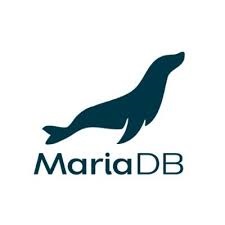MariaDB Tutorial
MariaDB is an open-source relational database technology. It is a great alternative or drop-in replacement for MySQL.
Our tutorial will start with the basics of MariaDB such as how to retrieve and manipulate data. Then we will move to the more advanced topics such as how to create tables, functions, procedures, and triggers. We will conclude with a review of the functions that are proprietary to MariaDB.
With this tutorial, you should be on your way to becoming proficient in MariaDB and its programming language.
Prerequisites
There are no prequisities for this MariaDB tutorial. You should be able to easily understand this tutorial and learn the basic concepts of MariaDB as you progress to the more advanced topics.
Now, let's get started!
Or jump directly to a topic in MariaDB:
MariaDB Functions
| Functions - Alphabetical | MariaDB Functions listed alphabetically |
| Functions - Category | MariaDB Functions listed by category |
MariaDB Keys, Constraints and Indexes
| Primary Keys | Create, alter, and drop primary keys |
| Unique Constraints | Create, add, and drop unique constraints |
| Indexes | Create, drop and rename indexes (performance tuning) |
MariaDB Privileges and Passwords
| Grant/Revoke Privileges | Grant or revoke privileges |
| Change Password | Change a user's password |
MariaDB Database Administration
| Users | Database accounts |
MariaDB Programming
| Functions | Create and drop functions |
| Procedures | Create and drop procedures |
| Cursors | Create cursors within stored programs |
| Literals (Constants) | String, number, date, time, boolean literals |
| Declaring Variables | Declare variables within stored programs |
| Loops and Conditional Statements | LOOP statement, IF-THEN-ELSE and others |
| AUTO_INCREMENT (Sequences) | Create a sequence of numbers using the AUTO_INCREMENT attribute |
| Comments within SQL | How to create comments within your SQL statement |
MariaDB Comparison Operators
| Comparison Operators | Operators such as =, <>, !=, >, <, and so on |
MariaDB Query Types
| SELECT Statement | Retrieve records from one or more tables |
| SELECT LIMIT Statement | Retrieve records from a table and limit results |
| INSERT Statement | Insert records into a table |
| UPDATE Statement | Update existing records in a table |
| DELETE Statement | Delete records from a table |
| DELETE LIMIT Statement | Delete records and limit number of deletions |
| TRUNCATE TABLE Statement | Delete all records from a table (no rollback) |
| UNION Operator | Combine 2 result sets (removes duplicates) |
| UNION ALL Operator | Combine 2 result sets (includes duplicates) |
| INTERSECT Operator | Intersection of 2 result sets |
| Subqueries | A query within a query |
MariaDB Joins
| JOIN Tables | Inner and Outer joins |
MariaDB Aliases
| ALIASES | Create a temporary name for a column or table |
MariaDB Clauses
| DISTINCT Clause | Remove duplicates from the results |
| FROM Clause | List tables and join information |
| WHERE Clause | Filter results |
| ORDER BY Clause | Sort query results |
| GROUP BY Clause | Group by one or more columns |
| HAVING Clause | Restrict the groups of returned rows |
MariaDB SQL Functions
| COUNT Function | Return the count of an expression |
| SUM Function | Return the sum of an expression |
| MIN Function | Return the min of an expression |
| MAX Function | Return the max of an expression |
| AVG Function | Return the average of an expression |
MariaDB Conditions
| AND Condition | 2 or more conditions to be met |
| OR Condition | Any one of the conditions are met |
| AND and OR | Combine AND and OR conditions |
| LIKE Condition | Use simple pattern matching (wildcards) in a WHERE clause |
| RLIKE Condition | Use regular expression matching in a WHERE clause |
| IN Condition | Alternative to multiple OR conditions |
| NOT Condition | Negate a condition |
| IS NULL Condition | Test for a NULL value |
| IS NOT NULL Condition | Test for a NOT NULL value |
| BETWEEN Condition | Retrieve within a range (inclusive) |
| EXISTS Condition | Condition is met if subquery returns at least one row |
MariaDB Tables and Views
| CREATE TABLE | Create a table |
| CREATE TABLE AS | Create a table from another table's definition and data |
| ALTER TABLE | Add, modify, delete columns in a table; rename a table |
| DROP TABLE | Delete a table |
| VIEW | Virtual tables (views of other tables) |
MariaDB Data Types
| Data Types | Data Types in MariaDB |
MariaDB Question and Answer
| Question & Answer | Various questions and answers |



No comments:
Post a Comment